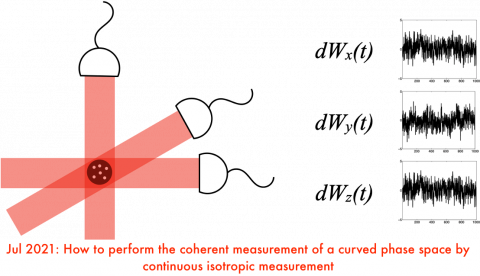Originally introduced in 1960 by John Klauder, the spin-coherent measurement is the heart of generalized quantization. Since 2001, it was understood that the spin-coherent measurement could somehow be done in a way analogous to how Arthurs & Kelly anticipated quantum heterodyne for the standard coherent measurement of optics. However, physicists were missing the mathematical concepts needed to realize it. In our paper, we bring needed tools from differential geometry, quantum measurement theory, and stochastic calculus to the theory of coherent states. Specifically, we show the continuous isotropic measurement corresponds to an unraveling which gives an operational meaning to the complex semisimple Lie groups.
The spin-coherent measurement is tomographically complete for any spin-j system. Further, the spin-coherent measurement is known to be the optimal measurement for estimating the direction of a qubit given 2j copies.
For details see
“How to perform the coherent measurement of a curved phase space by continuous isotropic measurement. I. Spin and the Kraus-operator geometry of SL(2,C)”, Christopher S. Jackson, Carlton M. Caves arXiv:2107.12396.
